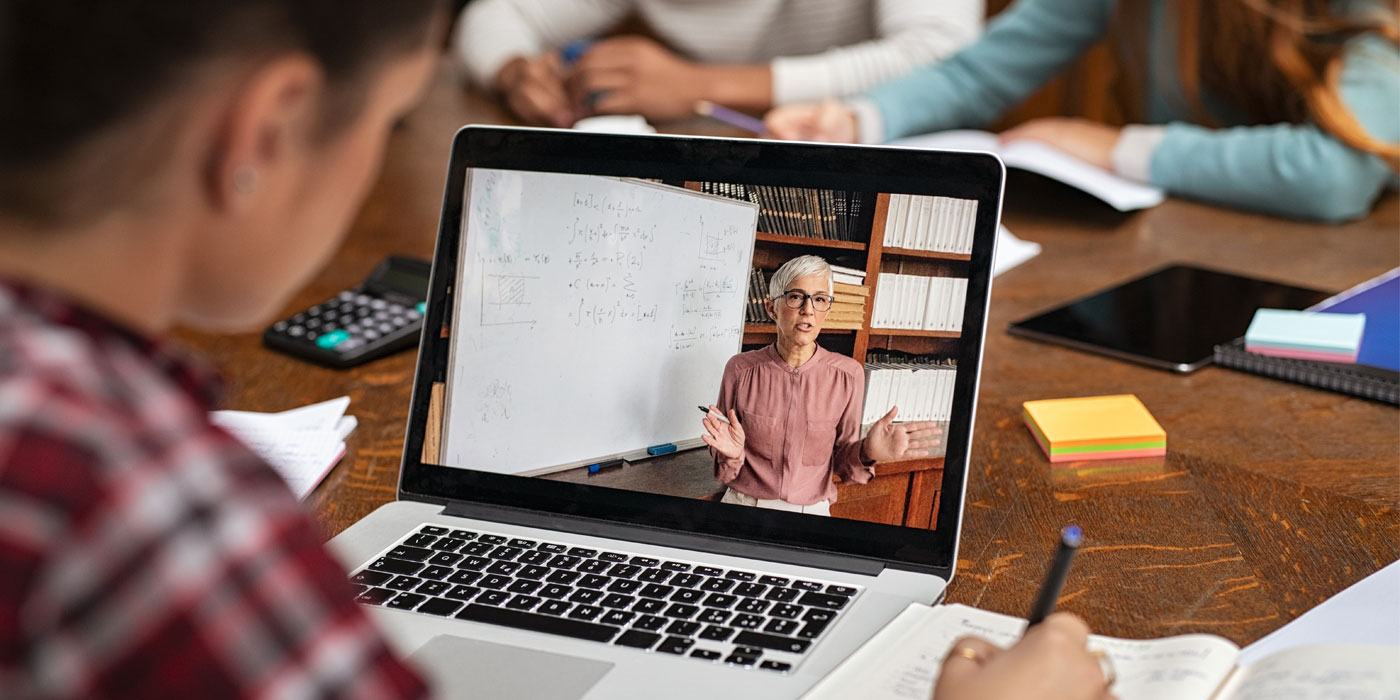
We are currently in a situation that is unprecedented—schools closing for weeks, people confined to their homes, and expectations that learning continues online.
I have been fortunate to be involved in the development of online learning software and now am back in the classroom using what I learned over the last 15 years. I hope that these tips and tricks will help you as much as they have helped me.
Here are the givens:
You probably do not have access to an online platform that was designed for delivering high-quality music-specific content. Your students did not sign up to take an online course. Music is inherently a social phenomenon. What you are doing is creating meaningful experiences for students that can help them to continue learning when they are not in school. You will not be able to deliver the same level of care, attention, and instruction now.
- Be careful about pre-recording video sessions for students. Start by saying it live (you can record live sessions and repost them), or put it in a written document of some form. Pre-recording video can turn into an unsustainable approach to teaching online over the long term.
- Use YouTube! There are millions of great videos on YouTube. Use YouTube as an online resource for everything except task introductions. Someone has already said what you are going to say (unless it’s a live conversation) and they have probably said it better than you would have and they already spent more time producing the video.
- Make your lessons personal by starting class with a live session that “sets the stage” for what is going to be taught and learned. Record that presentation/instructions so that students who are not “in class” at the moment can access the information later. The live presentation is for students who are in a synchronous learning mode and the recording is for asynchronous learning that will happen after your class time.
- Most adults can concentrate for about 20 minutes. Break up anything that you do on-line into chunks that are no longer than 20 minutes. That goes for everything: presentations, videos, exercises – smaller bite-sized tasks will help students to be successful. This will also help to create a structure and rhythm to your classes. Keeping some consistency to your lesson structure will really help your students.
- It is very easy to create assignments that take a lot of time to complete and are difficult to do without your guidance. Break up larger assignments into smaller pieces that are completed over multiple class periods and check for understanding periodically in one of these ways: quick response, typed text, recording audio, recording video.
- On-line interaction can be very productive. Have students start with their mics muted and use the chat feature to solicit responses to questions. Leverage the fact that everyone can type at once and all of those responses are recorded. Take care of individual concerns after the session unless they apply to the whole class.
- Use resources that were designed for online teaching, or that are being offered for free during this time – SmartMusic, Finale, SoundCloud, MusicTheory.net, GarageBand, SoundTrap, and many more.
- Have fun during class. Use surveys, polls, quizzes and anything that involves kids during the lesson. Here is a list of online tools that are popular today: Kahoot, Quizlet, BrainPOP, Edpuzzle, Flipgrid, Padlet. Some have pre-made, music-specific content that can be accessed for free.
- Everyone likes to be heard. Invite specific students to respond. Don’t be disheartened by silence. Wait out those moments and know that it always seems longer to you. When you are on-line the energy will feel very different and usually comes in spurts.
And finally:
Take a deep breath and know that you are doing the best that you can. If online learning was better than being in a classroom, the world of education would have changed many years ago.
